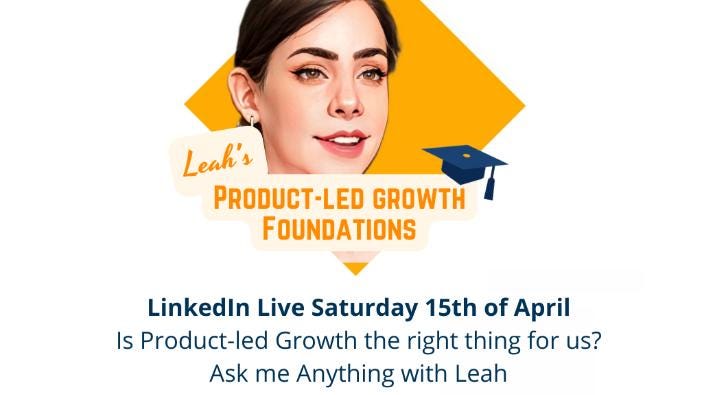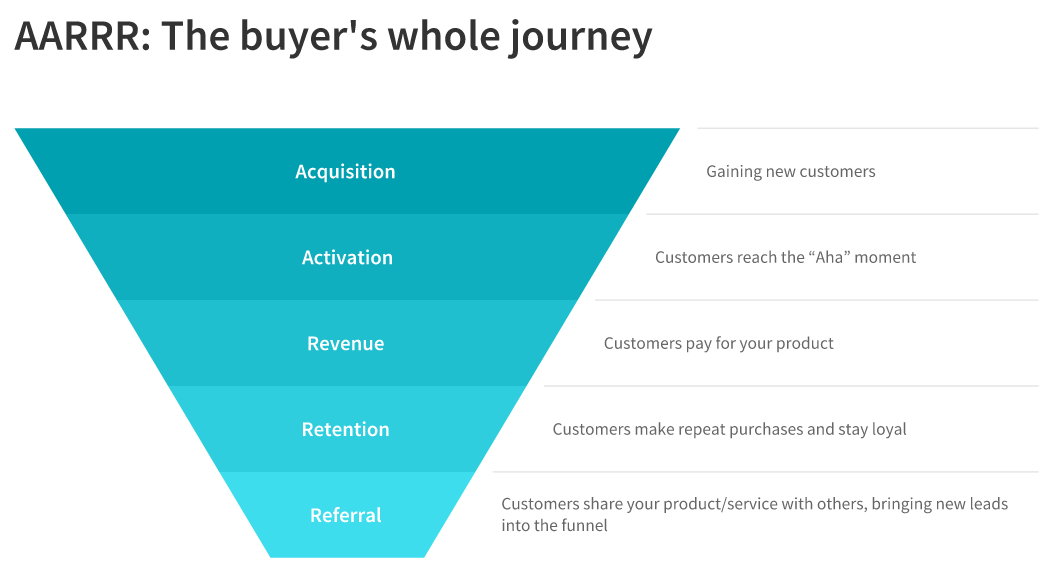Tear down your product & AMA with Leah
Now. Self-serve here we come
Live AMA with Leah this Saturday 15th of April
“Is product-led growth the right thing for us?”
Sign up here & More details on LinkedIn:
https://www.linkedin.com/events/isproduct-ledgrowththerightfitf7051946194830249984/comments/
Tear down your product
The very first thing I do with most clients is to tear down what there is, this exercise could be done without having an expensive consultant on the call and is most likely worth your time. This is especially applicable to b2b companies but also a valuable exercise for b2c companies that are not used to this style of thinking.
Specifically, when you think about integrating self-serve features or improving your existing trials/freemiums it is a great idea to do a tear-down:
Forget Sales, forget Product. This is about what your customer experiences
Step 1: Full onboarding tear down
The very first thing you can do without spending tons of $ is to analyze your growth acquisition funnels for whatever market segment you like.
I would limit it to 3 core steps first thing: Acquisition, activation, and retention. They fit into our customer lifecycle as follows:
Acquisition → Activation → Retention → Referral → Revenue
Same for “Referral” as the next step until you have nailed the other 3 steps successfully. While product-led growth is incredibly strong when it comes to virality and network effects (referral) you cannot skip any steps to get there so focus on the conditions of that first.
Only retaining products will be referred and only activated users can retain them. Get them right first.
The following steps can be tested by observing test users (talking to them) or simply doing this as a team exercise to start off.
Acquisition
“How are users discovering our product”
It makes sense to really walk through the process of a typical user in today’s flow with your product and map it out:
Do we offer a free version of our product that users can explore to form a mental model of what the product is about?
This includes also the cost side, if pricing is not clear a product might disqualify itself quick
If not, what kind of material do we offer that comes close to a free version?
If not, what kind of interaction do our users have to take to get to that step?
Interacting with a form
Booking a sales call and so forth.
Activation
“How are users reaching success with our product?
Once a user is aware of our product how do they reach success in it? (This can be after having received access by sales or through a self-serve)
Is the product self-explanatory to reach a value output?
If not, is it a problem of finding the provided information
Or because the product needs to be explained by a salesperson due to complexity
If not, can success only be reached by integrating data by the users themselves?
Retention
“How are activated users continuing to engage with our product”
Once a user (people using it, not the buyers) has experienced success with our product what drives them to reuse the product?
The product is so easy to use and the value that they want to use it
If not, is your product easy to onboard but not easy to use repeatedly? (Single vs. repeat usage)
If not, are they using it because they are told to use it?
The best (plg) version of our product
Once these 3 steps have been mapped out you have some first indicators of how a product-led growth version of your product could look like by specifically targeting the gaps (which can be changed) from Acquisition / Activation / Retention we surfaced.
In general, it makes sense to try to design this flow with as little human interaction necessary as possible:
Acquisition: Free, self-serve version of our product
Activation: Easy to use and fast way to get to a first-value version of our product
Retention: Balancing easy-to-learn and easy-to-use repeatedly. What does our product look like if we focus on the most used actions?
By the end of this exercise, you should know how far you are actually away from having a product-led growth version of your product. The 3 areas around acquisition, activation, and retention are all focused on product work and give you a rough idea of what’s necessary to change.
Step 2: Data teardown
Whether and how to measure data about your users and the ideal version of your product is not optional to know and is often forgotten.
I highly recommend resisting the urge to ship any self-serve version of your product without minimal tracking of user actions, because:
It’s unlikely that leads magically start to come in on your first try
Product-led growth impact on revenue takes more time than you might think
Learning from failed experiments is a quality of product-led companies it takes skill to do so
Measuring data is the easiest step after solving the technical implementation, the question is then how to interpret it correctly and leverage it. If we agree that understanding the user is always beneficial for any business then we can temporarily shelf the question of how to leverage it.
Measure / Surface / Leverage
Keep reading with a 7-day free trial
Subscribe to Leah’s ProducTea to keep reading this post and get 7 days of free access to the full post archives.



